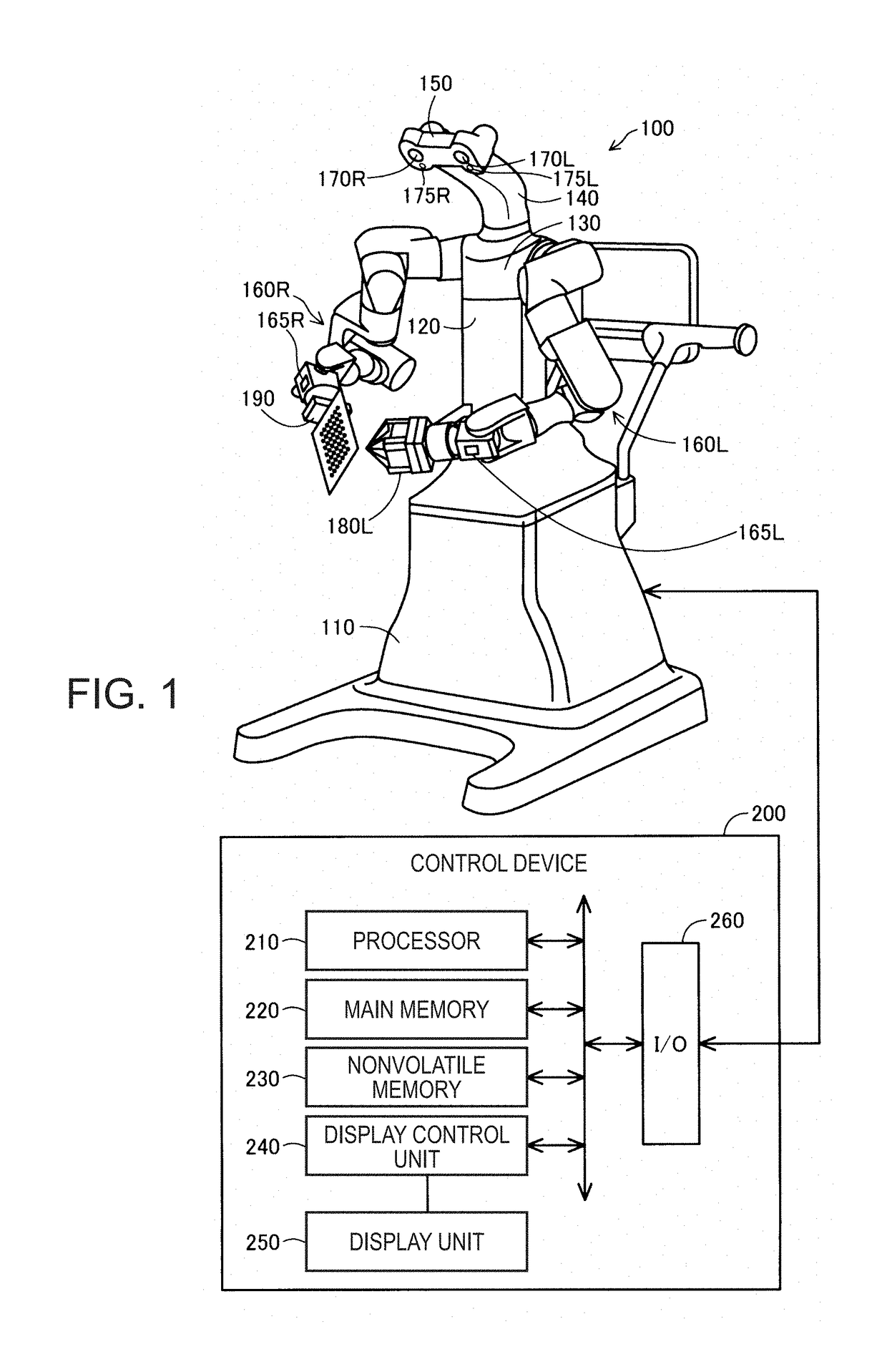Calibration method and calibration tool of camera
a technology of calibration tool and camera, which is applied in the field of plurality of cameras, can solve the problems of complicated calibration work, insufficient consideration of the case of calibrating the plurality of cameras,
- Summary
- Abstract
- Description
- Claims
- Application Information
AI Technical Summary
Benefits of technology
Problems solved by technology
Method used
Image
Examples
first embodiment
A. First Embodiment
[0021]FIG. 1 is a conceptual diagram of a robot system that executes a calibration method of a first embodiment. The robot system includes a robot 100 and a control device 200. The robot 100 is an autonomous robot capable of performing work while autonomously determining the work by recognizing a work target with cameras 170L, 170R, 175L, 175R, 165R, and 165L and freely adjusting the force. The robot 100 can operate as a teaching playback robot that executes work in accordance with prepared teaching data.
[0022]The robot 100 includes a base 110, a body portion 120, a shoulder portion 130, a neck portion 140, a head portion 150, and two arms 160L and 160R. A hand 180L and a calibration tool 190 are detachably attached to the arms 160L and 160R. A calibration tool 190 is a camera calibration tool provided with patterns P1, P2, and P3 to be described later. The hand 180L is an end effector that grips a workpiece or a tool.
[0023]Cameras 170L, 170R, 175L, and 175R are i...
second embodiment
B. Second Embodiment
[0037]FIG. 5 is an explanatory view illustrating a surface 520 on which a pattern P11 and a pattern P12 are formed, of the calibration tool used in a calibration method of a second embodiment. In FIG. 5, the pattern P11 of the calibration tool is used for calibrating the camera 170 and the camera 175 of the robot 100 and a pattern P12 is used for calibrating the camera 165 of the robot 100.
[0038]The patterns P11 and P12 are circular shapes having the same mark shape and the sizes of the marks are different. The marks constituting the pattern P11 are larger than the marks constituting the pattern P12. The patterns P11 and P12 are formed on the same surface 520 of the surfaces constituting the calibration tool. A second rectangular region R12 circumscribing the pattern P12 is disposed inside a first rectangular region R11 circumscribing the pattern P11. In the second embodiment, the region R11 is disposed so as to encompass the region R12, but in another embodiment...
PUM
 Login to View More
Login to View More Abstract
Description
Claims
Application Information
 Login to View More
Login to View More - R&D
- Intellectual Property
- Life Sciences
- Materials
- Tech Scout
- Unparalleled Data Quality
- Higher Quality Content
- 60% Fewer Hallucinations
Browse by: Latest US Patents, China's latest patents, Technical Efficacy Thesaurus, Application Domain, Technology Topic, Popular Technical Reports.
© 2025 PatSnap. All rights reserved.Legal|Privacy policy|Modern Slavery Act Transparency Statement|Sitemap|About US| Contact US: help@patsnap.com



